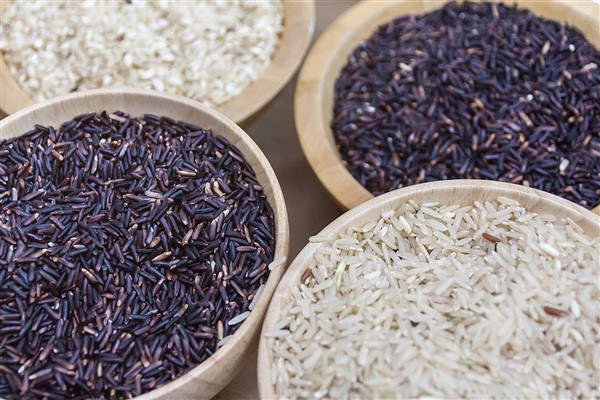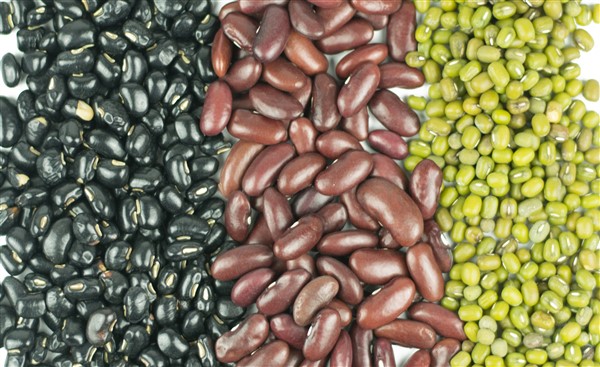- Home
- All About China
- Essential Ingredients and Spices
- 11 Types of Grain for Making Congee (and How to Use Them)
11 Types of Grain for Making Congee
(and How to Use Them)

None of us really thought of the possibility of having hundreds of different Cantonese congee recipes available to us, let alone actually making them at home. When we start to dive into the world of delicious congee, we are inevitably a bit overwhelmed by the different choices we have for ingredients and the techniques involved cooking with them.
In this short guide, we’ll introduce the 11 common types of grain for making excellent Cantonese congee, their nutritional benefits, and most importantly, how to use them.
Feel free to skip ahead by clicking one the links below:
5 Types of Rice for Making Congee
Rice is the most commonly utilized ingredient in all kinds of porridge all over the world, including Cantonese congee. This is probably why congee is most frequently referred to as Cantonese or Chinese rice porridge. However, there is no “best” rice for congee. Different types of rice are used in different congee recipes, and each is different when it comes to preparation, cooking time, and water to rice ratio.
-
Japonica Rice
Standard congee is made with Japonica rice. The grain is short, round and translucent. The congee is cooked at a ratio of 1 cup of rice to 12 cups water for a mouthfeel that sits between Japonica rice and glutinous rice. It is commonly used for Taiwanese savory congee.
Some of our most popular recipes utilizing japonica rice are lotus seed congee, pork and century egg congee, and pineapple banana congee.
-
Brown Rice
Brown rice contains sugar, protein, and different vitamins. Its fiber helps promote peristalsis. It is also very filling. The texture of congee made with brown rice will be relatively stiff. Brown rice grains should be soaked in cold water for one hour or more before being boiled for congee.
-
Millet
Though not really a type of rice, millet has a unique mouthfeel and aroma. It contains calcium, iron, and vitamins and is of high nutritional value. It is often cooked as an accompaniment to meals or made into congee or liquor. In traditional Chinese medicine and food therapy, millet is utilized to strengthen the kidneys, alleviate internal heat, and act as a diuretic. Millet is easy to cook, and only cold water needs to be added and boiled to make it into congee.
-
Glutinous Rice (Sticky Rice)
Glutinous rice is divided into long-grain and short-grain varieties. Long-grain rice has a soft and sticky texture that is unsuitable for congee; short-grain glutinous rice is sweet and oily, not quite as sticky as long-grain rice, and suitable for making sweet congee. Before boiling, it should be soaked in cold water for over an hour in order to achieve the best results in making congee.
If you want to try a recipe with glutinous rice, try our lotus seed congee with lily, sweet winter melon congee with beans, or the delectable longan congee recipe!
-
Black Rice
Black rice has fewer calories than glutinous rice, and Chinese medicine believes that it enriches the blood and strengthens the spleen, so it is widely used in sweet congees in China. Before cooking, it should be soaked in water for at least an hour. This produces a congee with a granular mouthfeel and an authentic flavor.
Ba Bao Zhou, also known as Laba Congee or Eight Treasures congee, has long been the icon for Chinese sweet congee recipes. Black rice, surprisingly, is actually one of the eight “treasures”!
3 Types of Beans Commonly Used in Congee

Yes, it may be surprising, but Cantonese utilize different types of beans as grains for many congee recipes. We featured some of these delicious recipes such as red bean congee, mung bean congee with red dates and lotus seeds, and the nutritious Chinese yam congee with mung beans, in our Congee section. This is actually not just in Guangzhou or Hong Kong, plain mung bean congee with sugar is a popular sweet in the summer all across China. Mung bean or red bean popsicle is another treat that you just cannot miss while you’re there!
-
Red Beans
Red beans are high in iron, and they are great for “supplementing the blood” according to Chinese. It is particularly useful for women who suffer from qi and blood vacuity. It is often used in sweet congee recipes. Red bean takes a long time to cook. You must first soak it in cold water for at least 5 hours, and then steam it with water for about 2 hours before boiling it with the other congee ingredients.
-
Mung Beans
Mung bean contains protein, carbohydrates, calcium, iron, phosphorous, and carotene. It supplements and boosts original qi, harmonizes the five viscera, clears fire, detoxifies, relieves summer heat, allays thirst, and lowers blood cholesterol and blood pressure levels. It is perfect for consuming in the summer to relieve heat symptoms. They are indeed a magical ingredient according to traditional Chinese medicine! No wonder mung beans are so popular among various culinary sub-cultures in China. Though mung bean cooks quicker than red bean, it still must be soaked in cold water for 1 hour.
-
Black Soybeans
Black soybeans are low-calorie beans that are high in protein. They only contain plant sterols, hence help lower blood cholesterol. Frequently consuming black soybeans can soften arteries, nourish the skin, and prevent aging. It is especially useful for those suffering from hypertension and other heart diseases. Black soybeans can be boiled in congee with brown rice, or they can be used in congee on their own. It is best to soak black soybeans for at least 2 hours before using it in congee.
3 Bonus Grains Less Commonly Used in Congee
These three types of grain are not the most common in Cantonese congee, but they have undoubtedly contributed to some unique, tasty and nutritious options to our vast congee recipe library. Some of the most famous congee recipes out there happen to use these three grains as crucial ingredients to bring out the flavors and textures.
-
Corn
The starch in corn is easily absorbed by the human body, and it helps lower cholesterol and prevent coronary heart disease. It is not used alone in congee but boiled together with rice.
If you have ever tried our multi-color shrimp congee recipe, you’ll know the power of these delicate little corn kernels. Not only do they add a sweet appetizing taste to the congee, but also helps to achieve the colorful, appealing look of congee dishes.
-
Oats
Oats have high nutritional value, particularly in its B vitamin content. Oats aid in digestion and can benefit those suffering from cardiovascular disease. The faint flavor oats produce after being boiled in congee is very unique.
Our popular smooth and glutinous oatmeal congee recipe is an excellent example of cooking these delicious oats with milk and sweet Chinese snow pears. Add a little bit of crystallized rock sugar into the almost ready congee brings out this irresistible sweet and nutty aroma.
-
Job's Tears
Job's tears, also commonly known as Chinese pearl barley, is great for promoting a youthful appearance. It is high in plant-based protein, sugar, vitamins, and minerals. It can help whiten and nourish the skin and decrease inflammation. It is often claimed that frequently consuming Job's tears can help make one's skin finer. Job's tears must be soaked in cold water for 1 hour before being boiled with brown rice in a 1:1 ratio.
Both the popular snow fungus congee recipe on our site and the world-renowned Ba Bao Zhou (Laba congee) use the delicious Job’s tears as an essential ingredient.
Conclusion
Chinese people have become adept at changing their foods to match the seasons. During the summer, more light, fresh, and sweet congee is consumed, while in the winter people eat more rich, full-bodied congee dishes. Aside from the taste, Chinese people are also very particular about the aesthetic quality of their food. The pairing and harmony between various ingredients have reached philosophic levels of depth. The 11 types of grain ingenious Cantonese people have discovered and utilized for different congee recipes are perfect illustrations of the profound Chinese culinary art.
You may also like: